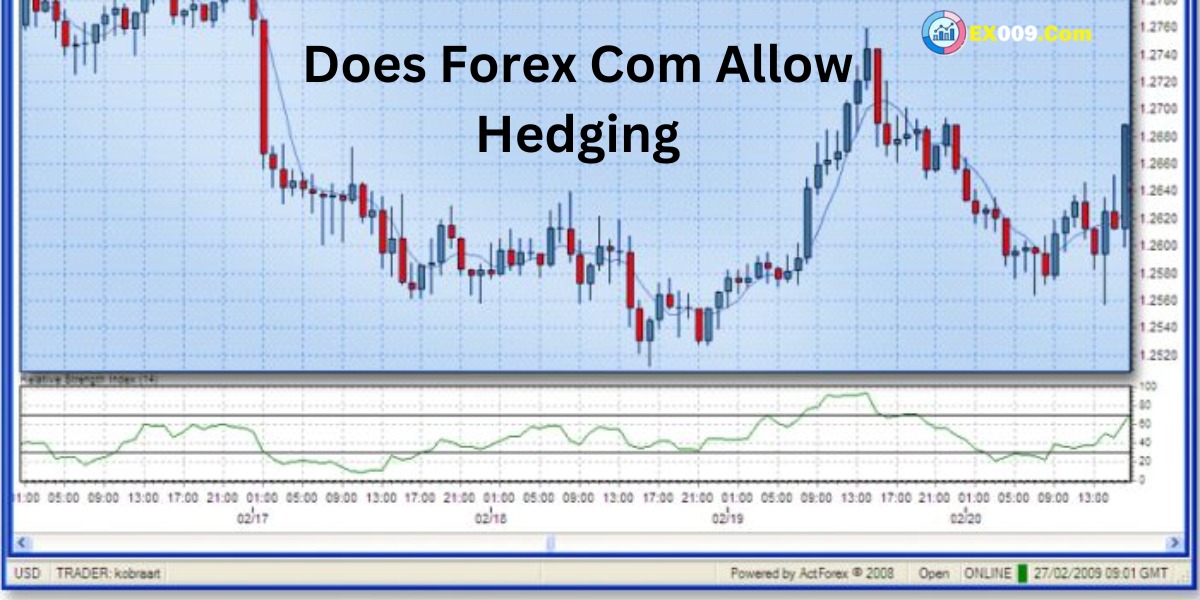Does Forex Com Allow Hedging?

Are you looking to invest in the Forex market? Before taking any step, it’s essential to understand the rules and regulations involved. One of the most controversial topics is hedging – an investment strategy used by many traders.
If you’re wondering if forex.com allows hedging, then this blog post is for you! We’ll explore what hedging is and how it works, explain why some brokers don’t allow it, and ultimately answer whether forex.com permits this popular trading method. Let’s dive in!
What is Forex Hedging?
Forex hedging is the practice of taking Hedge positions in order to mitigate risk. A Hedge position is a financial instrument that allows you to profit from the movement of prices while protecting your original investment. Forex hedging can be used for a variety of reasons, including:
- Preventing big losses on an existing investment.
- Reducing the risk associated with your trading account.
- Enhancing your chances of making a profitable trade.
- Mitigating risks associated with speculative investments (i.e., CFDs).
There are many different types of Hedges available, each with its own advantages and disadvantages. Some common types of Hedges include:
Long and Short Positions: A Long Position means you are buying currency futures contracts and a Short Position means you are selling currency futures contracts. By taking these positions, you are locking in profits or minimizing losses should the market move in your favor.
The advantage to this type of Hedge is that it limits your exposure to market fluctuations, regardless of what happens over the course of the contract’s life span. The disadvantage is that if the market moves against you, you may end up losing all or part of your initial investment.
Expiring Contracts: An Expiring Contract hedges against risks related to continued price movements over its lifetime. For example, if you buy a 10-year dollar/yen exchange-traded fund (ETF), each day’s closing.

Types of Forex Hedges
There are a variety of forex hedging strategies that traders can employ to reduce the potential risks associated with their investments. Some popular hedging techniques include buying and selling options, using forward contracts, and using commodities as securities.
Each of these strategies has its own benefits and drawbacks, so it’s important to choose the right one for the unique circumstances of each trade. For example, buying options may be a good option when you’re hedging against stock price movements, but not when you’re trying to hedge against currency fluctuations.
The best way to know whether or not forex hedging is right for you is to consult with a professional trader or financial advisor. They will be able to help you determine which strategy is the most appropriate for your specific needs.
Best Forex Trading Platform in the USA
Looking for the best forex brokers? Look no further than ex009! ex009 offers a wide variety of indicators, trend indicators, momentum, forecasts, volatility, volume, and more to help traders achieve profitable forex trading strategies. Whether you’re a beginner or an experienced trader, the ex009 library of tools will help you take your trading to the next level. So what are you waiting for? Sign up today and start profiting from the Forex market!
The forecasts section includes a wide range of forex prediction models, including linear regression models and neural networks. These models can help traders anticipate future events and exchanges rates movements. The volatility section provides real-time updates on currency prices throughout the day. This information can be used to make informed trading decisions.
How to Use Forex Hedges
Forex hedging is a technique used to protect your losses in case the market moves against you. The most common way to do this is by buying or selling currency contracts with the goal of reducing your potential loss. However, there are other types of hedges available as well.
There are three main types of forex hedges: technical, fundamental, and market timing.
Technical hedges involve using indicators or patterns to determine when an asset is oversold or overvalued and then taking steps to offset that position. Fundamental hedges target different underlying factors such as interest rates, political events, or economic conditions in order to reduce the risk associated with a given trade.
Market timing hedge investments based on when particular markets are expected to close- this type of hedge can be risky because it relies on information that is often incorrect.
The Risks of Forex Hedging
Forex hedging is a popular strategy used to mitigate the risk of unfavorable currency movements. However, there are risks associated with forex hedging that should be considered before engaging in this practice.
First and foremost, forex hedging is an inherently risky strategy. Any losses incurred as a result of forex hedging can significantly detrimentally affect a trader’s portfolio performance and could even lead to financial ruin.
In addition, forex hedging can also lead to increased volatility in the marketplace, which can make it more difficult for traders to achieve short-term investment success.
Moreover, forex hedging can also amplify price swings associated with market forces outside of your control. For example, if the U.S. dollar begins to lose value against another currency (such as the euro), then forex traders who are hedging their positions will experience larger losses than those who are not hedged.
This will cause prices in the respective markets to move even further apart, potentially resulting in even more losses for those who have invested in these assets based on these fluctuations.
Therefore, it is important for traders to understand all of the risks involved with forex hedging before engaging in this practice. If done improperly, forex hedging could lead to sizeable losses and undermine investment success prospects.
